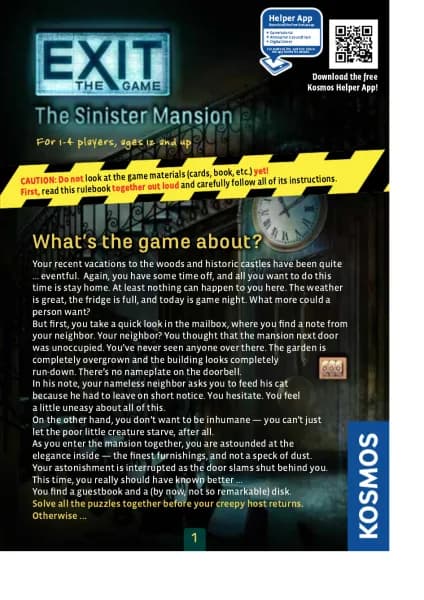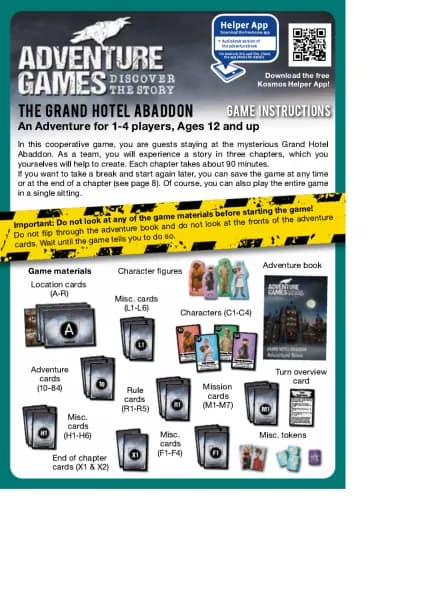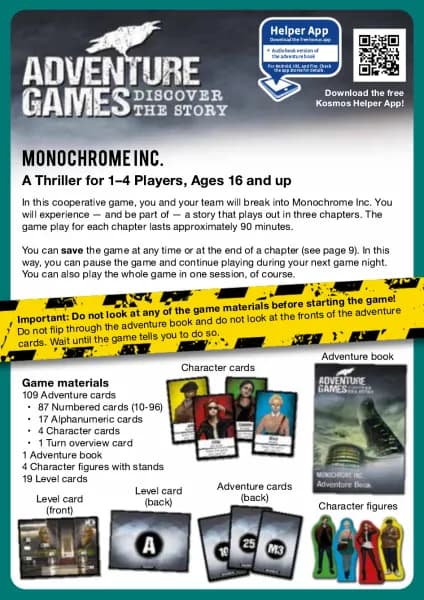Thames & Kosmos Master Detective Toolkit V2 handleiding
Handleiding
Je bekijkt pagina 9 van 52

Keyword:
Piece of evidence — a suspicious
fact which doesn’t directly prove
anything, but which still lets you draw
a conclusion about participation in
a crime, e.g. the discovery of a piece
of stolen property on a suspected
robber. The opposite case is
“catching someone in the act” — the
direct observation of a perpetrator
at the scene of the crime.
Keyword:
Cognitive abilities — the word
“cognitive” goes back to the Latin
word cognito (knowledge). A
detective with cognitive abilities
(such as Mike) demonstrates that
fact by consistently and correctly
perceiving and interpreting
important signs and details in even
the most complicated cases.
Keyword:
Cryptology — The science of secret
languages and secret writing. The
name comes from a composition of
the Greek words kryptos (hidden,
secret) and logos (word, knowledge).
James’ Pro Tip:
How to find a perpetrator
In any case, you should first collect as many
pieces of evidence as possible: statements
from witnesses, clues, and notable facts. The
details you collect must be supplemented by
further information, and then thoroughly cross-
checked and studied for inconsistencies. With
the help of information that has been filtered
— people also say “confirmed” — in this way, the
precise timing of a possible sequence of events
can be reconstructed. The number of suspects
can then be considerably reduced on the basis
of a possible motive or a specific clue. In the
process, all the statements, clues, and alibis
have to be checked again and compared against
the time sequence. In the ideal case, just one
single suspect remains at the end.
Mike’s Pro Tip:
Hide a secret message between the lines
You should never send a message written in invisible ink on an otherwise completely blank piece
of paper. That would immediately raise the suspicion that it’s a secret message. Instead, write a
completely harmless-sounding letter and then write the invisible message between the lines. The
spacing between the lines has to be big enough for this.
For a short message, you could just use the envelope, because that is the last place someone will
look if they happen to find it — after all, the writing is invisible! You will find out on page 40, in the
“Secret Messages” chapter, how to encode a message as securely as possible.
Carolyn’s Pro Tip:
Describe people as precisely as possible
When observing people, pay careful attention
to individual features such as body size, hair
color, and body build, as well as the type
and color of their clothing. Specific details
or additional things such as (sun)glasses,
piercings, rings, necklaces or a watch are
also important. Many people are immediately
recognizable based on a characteristic way of
walking or other peculiarities (body posture
or typical gestures). Make a note of features
like these and write them down on the
individual’s file card. You can train yourself to
observe people — ideally together with several
other detective colleagues — in the city, in
front of a movie theater, on a bus or train,
in a department store or in any interesting
location where a lot of people are passing by.
7
Pro Tips
Bekijk gratis de handleiding van Thames & Kosmos Master Detective Toolkit V2, stel vragen en lees de antwoorden op veelvoorkomende problemen, of gebruik onze assistent om sneller informatie in de handleiding te vinden of uitleg te krijgen over specifieke functies.
Productinformatie
| Merk | Thames & Kosmos |
| Model | Master Detective Toolkit V2 |
| Categorie | Niet gecategoriseerd |
| Taal | Nederlands |
| Grootte | 38879 MB |







